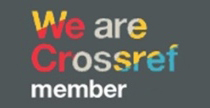PEMAMPAATAN LIMBAH KERTAS MENJADI KALIGRAFI HIASAN DINDING KAMPUNG JALIN KOTA JANTHO
DOI:
https://doi.org/10.51804/deskovi.v2i1.403Keywords:
Kaligrafi hias, Limbah kertas, Pengabdian masyarakatAbstract
Kampung jalin merupakan daerah yang berdekatan dengan kota Jantho. Jarak jalin dengan kota jantho dapat diakses dengan kendaraan roda empat maupun roda dua selama ±30 menit perjalanan. Secara geografis jalin dikelilingi lahan subur sehingga sebagian besar masyarakat jalin kondisi tersebut mengindikasikan bahwa jalin didominasi oleh sektor pertanian dan perkebunan, sedangkan potensi kesenian masih sangat minim terutama di bidang seni rupa. hal tersebut menimbulkan pemikiran bahwa peluang seni rupa untuk berkembang masih sangat terbuka. Minimnya pengetahuan masyarakat akan keterampilan seni membutuhkan bimbingan dan pelatihan oleh tenaga ahli sehingga keterampilan seni ini sendiri dapat di konversi menjadi peluang usaha dan memiliki nilai ekonomis, salah satunya dengan memanfaatkan limbah kertas menjadi kaligrafi hias sebagai cendra mata. Kaligrafi hias merupakan cara sederhana mengolah bahan-bahan kertas tidak terpakai menjadi hiasan dengan memanfaatkan benda-benda sederhana yang diolah sedemikian rupa sehingga menjadi benda yang memiliki nilai seni dan memiliki nilai jual. Keutamaan kaligrafi hias ini sendiri yakni dari bahan-bahan baku yang mudah didapatkan dengan harga yang tergolong cukup murah dan memiliki nilai jual yang tinggi.
Interlace village is an area adjacent to the city of Jantho. Distance intertwined with the city of Jakarta can be accessed by four-wheeled vehicles or two-wheeled vehicles for ± 30 minutes. Geographically intertwined surrounded by fertile land so that most people intertwine these conditions indicate that interbreeding is dominated by the agricultural and plantation sectors, while the potential of art is still very minimal, especially in the field of art. this raises the idea that the opportunities for art to develop are still very open. The lack of public knowledge of art skills requires guidance and training by experts so that the art skills themselves can be converted into business opportunities and have economic value, one of which is by utilizing paper waste into decorative calligraphy as eye cendra. Decorative calligraphy is a simple way to process unused paper materials into decorations by utilizing simple objects that are processed in such a way that they become objects that have artistic value and have selling points. The virtue of this decorative calligraphy is that it is from raw materials that are easily obtained with prices that are quite cheap and have a high selling value.
Downloads
References
Ali Masduqi, 2004, Minimisasi Limbah Pada Industri Pulp Dan Kertas Institut Teknologi Sepuluh Nopember
Djelantik, A.A.M. (1999) : Estetika Sebuah Pengantar. Masyarakat Seni Pertunjukan Indonesia
Feldman,E.B,(1967) : Art As Image And Idea, Prince-Hall,INC., Englewood Cliff, New Jersey
George Kenneth M. 2012, MELUKIS ISLAM : Amal dan Etika Seni Islam Di Indonesia, Mizan.
M. hatta dahlan, 2011, Pengolahan Limbah Kertas Menjadi Pulp Sebagai Bahan Pengemas Produk Agroindustri, Prosiding Seminar Nasional AVoER ke-3 Palembang
Sri Astuti, 2012, Pemanfaatan Limbah Kertas Koran Sebagai Bahan Utama Pembuatan Tas Dan Sandal Di “Dluwang Art” Sinduadi Sleman Yogyakarta
Tabrani, Primadi, Prof. Dr. 2000, Proses Kreasi, Apresiasi, Belajar, Penerbit ITB, Bandung.
Tabrani, Primadi, Prof. Dr. 2006, Kreativitas dan Humanitas: Sebuah Studi Tentang Peranan Kreativitas dalam Perikehidupan Manusia, Penerbit Jalasutra, Yogyakarta.
Yulia Tesa, 2017, Melakukan Daur Ulang
Kertas Bekas Dan Dimanfaatkan Dalam Kehidupan Sehari- Hari, Jurnal Nasional Ecopedon , payakumbuh
Downloads
Published
How to Cite
Issue
Section
License
With the receipt of the article by DADJ Editorial Board and the decision to be published, the copyright regarding the article will be transferred to DADJ. The copyright transfer form can be downloaded here.
DADJ has the right to multiply and distribute the article and every author is not allowed to publish the same article that was published in this journal.

DESKOVI: Art and Design Journal is licensed under a Creative Commons Attribution 4.0 International License.
Under the following terms:
Attribution — You must give appropriate credit, provide a link to the license, and indicate if changes were made. You may do so in any reasonable manner, but not in any way that suggests the licensor endorses you or your use.






